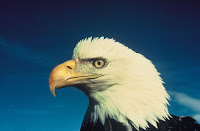 |
| Ly Nya Tcha |
The Hmong are an Asian ethnic group from the mountainous regions of China, Vietnam, Laos, and Thailand. There are 15,000 Hmong currently living in France. France's Hmong population grew steadily after the fall of South Vietnam in 1975. After American armed forces pulled out of Vietnam, a communist regime took over in Laos, and ordered the prosecution and re-education of all those who had fought against its cause during the war. Whilst many Hmong are still left in Laos, Thailand, Vietnam, Myanmar, and China, since 1975 many Hmong have fled Laos in fear of persecution. Housed in Thai refugee camps during the 1980s, many have resettled in countries such as the United States, French Guiana, Australia, Germany, and France.
Since their arrival in France, the Hmong were forced to adapt to an urban way of life in which their cultural practices could appear antiquated and superstitious. The Hmong have struggled to preserve their shamanic beliefs and traditions in the face of assimilation, religious conversion, and the incomprehension of their French neighbors. According to Ly Nya Tcha, a Hmong shaman living in Louvres, "Most of the Hmong community now places more faith in medicine and our tradition has lost its value. Plus, there are new religious beliefs that consider our traditions backwards.” Hmong converts to Protestantism, says Ly, "believe I live in the past and never ask for my help." Read more.
Since their arrival in France, the Hmong were forced to adapt to an urban way of life in which their cultural practices could appear antiquated and superstitious. The Hmong have struggled to preserve their shamanic beliefs and traditions in the face of assimilation, religious conversion, and the incomprehension of their French neighbors. According to Ly Nya Tcha, a Hmong shaman living in Louvres, "Most of the Hmong community now places more faith in medicine and our tradition has lost its value. Plus, there are new religious beliefs that consider our traditions backwards.” Hmong converts to Protestantism, says Ly, "believe I live in the past and never ask for my help." Read more.




